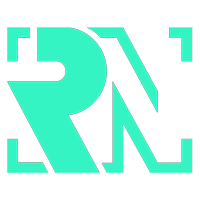
Understanding Render Farm Pricing: How Much Does It Cost?
Welcome to our comprehensive guide on how pricing works in a render farm. We know that pricing is a crucial factor when it comes to choosing a render farm service. Therefore, in this article, we will provide a detailed explanation of how render farm pricing works, and how to choose the best pricing plan that fits your budget.
What is a Render Farm?
Before we dive into how pricing works in a render farm, let’s first define what a render farm is. A render farm is a collection of high-performance computers that work together to render complex 3D animations, videos, and images. Render farms are used by professionals in the film, animation, and gaming industries to create high-quality visual effects.
How Pricing Works in a Render Farm:
Now let’s talk about how pricing works in a render farm. Render farms typically charge based on the amount of computing power you use, and the duration of your render job. The pricing structure can vary depending on the render farm you choose, but most of them use one or more of the following pricing models:
1) Pay-Per-Use Pricing Model:
The pay-per-use pricing model is the most common pricing model used by render farms. In this pricing model, you pay for the exact amount of computing power you use and the duration of your render job. For example, if you use a render farm that charges $0.05 per GHz hour, and your job runs for 10 hours on a 55 GHz node, then you will be charged $27.50 (0.05 x 55 x 10).
2) Fixed Price Per Job:
Some render farms charge a fixed price per job, regardless of how long it takes to render. This pricing model is best suited for smaller projects that require less computing power.
3) Subscription Pricing Model:
Render farms that use a subscription pricing model charge a fixed amount of money per month or year. This model is best suited for users who have a high volume of render jobs or who need to render projects frequently.
Factors That Affect Render Farm Pricing:
Now that we’ve discussed the different pricing models, let’s talk about the factors that can affect render farm pricing. The following factors can impact how much you pay for your render job:
1) Project Complexity:
The complexity of your project can affect render farm pricing. Projects that require more computing power to render will cost more than projects that require less computing power.
2) Deadline:
If you need your project to be completed quickly, you may have to pay more for your render job. Render farms may charge a premium for rush jobs or jobs that require a quick turnaround time.
3) Rendering Software:
The rendering software you use can also affect render farm pricing. Some render farms charge more for jobs that use specialized software or plugins.
Choosing the Right Render Farm:
Choosing the right render farm can be a daunting task, especially if you’re new to the industry. Here are some tips to help you choose the right render farm for your needs:
1) Research:
Do your research and compare different render farms. Look at the pricing models they use, their customer support, and their reputation in the industry.
2) Scalability:
Choose a render farm that can scale up or down based on your needs. This will help you save money on render jobs that require less computing power.
3) Customer Support:
Make sure the render farm you choose has good customer support. You don’t want to be left stranded if you encounter technical issues during your render job.
Conclusion:
In conclusion, render farm pricing can be complex, but it doesn’t have to be. By understanding how pricing works, the factors that affect pricing, and how to choose the right render farm, you can save money and get the results you need for your project. If you want RenderNow to run a test on your files to get a price and time please get in contact using the Lets Chat in the bottom right



